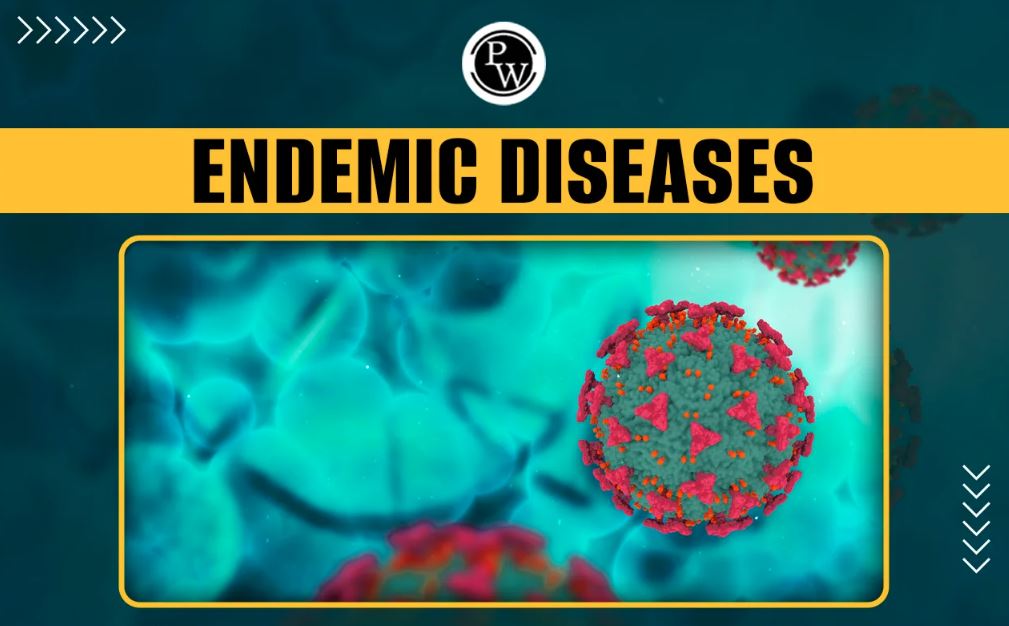How It Differs from an Epidemic and Pandemic
A disease is endemic if it is consistently present but limited to a certain region. This differs from an epidemic in which there is a sudden increase in the number of cases of a disease or a pandemic in which a disease has spread over several countries or continents.1
Examples of endemic diseases include malaria, an infectious disease consistently seen in Central and South America, Africa, Asia, and Eastern Europe.2 In the United States, HIV and hepatitis C are considered endemic because of their prevalence (meaning the proportion of the population affected over a given period).3
This article describes what makes a disease endemic and how it differs from epidemic and pandemic diseases. It also offers examples of endemic diseases and ways to prevent them.
What Does ‘Endemic’ Mean?
Epidemiologists are scientists who investigate patterns and causes of disease. They aim to define the parameters so that public health experts can develop the most effective means for controlling the disease. One of the ways they do so is by tracking the prevalence of a disease within a region.
Prevalence is measured by dividing the number of cases of a disease in a population by the total number of people in that population over a specific period.
By way of example, if 1,000 cases of a disease are reported in a population of 100,000 people from 2023 to 2024, the annual prevalence is said to be 0.01, or 1%.
By definition, a disease is said to be endemic if the prevalence remains stable within a region and persists with fairly predictable rates of infection and spread.
Endemic diseases do not have to be present at high levels. They can also be relatively rare. The defining feature is that the disease is always found in a region or population irrespective of whether there are a few cases or many.4
One such example is human rabies which is seen consistently at low levels in countries like Cote d’Ivoire.5 Until it is fully eradicated, it can be regarded as endemic as long as it continues to persist.
How Endemic Differs From Epidemic
Endemic diseases are often confused with epidemic diseases, but each is a distinct classification. The same is true of pandemic diseases.
Endemic diseases are often referred to as the “baseline” because they are used to monitor for any increases in the prevalence or incidence of a disease.
By definition:6
- “Endemic” refers to the usual prevalence of a disease within a region or population group.
- “Epidemic” refers to an increase in the number of cases beyond what is expected within a region over a specific period. The 2014 Ebola epidemic in West Africa is one such example.7
- “Pandemic” refers to an epidemic affecting several countries or continents, usually affecting a large proportion of the population. COVID-19 is a prime example of a pandemic disease.8
These terms can be confusing to the general public as it is often unclear at which point an endemic disease becomes epidemic or at what stage an epidemic disease becomes pandemic.
Adding confusion are terms like “cluster” (meaning an unusual grouping of a disease in a specific time and place) and “outbreak” (describing a localized rather than generalized epidemic).6
Despite the confusion, there is a clear set of criteria established by the World Health Organisation (WHO) and Centers for Disease Control and Prevention (CDC) to classify outbreaks, epidemics, and pandemics.
Examples of Endemic Diseases
There are numerous endemic diseases worldwide as well as in the United States. Many persist at relatively stable levels, while some like the flu have seasonal spikes.
Influenza
Influenza, or the flu, is a respiratory illness caused by seasonal influenza viruses that spread throughout the population each year.9 The viruses mutate frequently, causing new flu strains every year.
Research suggests that influenza has been endemic for at least 500 years. Today, about 8% of the U.S. population becomes sick with an influenza virus each year.10
Because seasonal flu is caused by many different viral strains, it is not considered a pandemic even as it spreads across the globe. The last flu pandemic occurred in 2009 when a specific influenza virus—called influenza A (H1N1)—emerged.11
Malaria
Malaria is endemic in many areas of Africa and Asia. The highest prevalence is found in sub-Saharan Africa and parts of Oceania, including Papua New Guinea.12
Globally, 249 million malaria cases and 608,000 malaria deaths were reported in 85 countries in 2022. More than half of all cases were reported in four countries: Nigeria, the Democratic Republic of the Congo, Uganda, and Mozambique.13
Efforts to control malaria have led to a reduction in prevalence in some countries. This includes draining swamps that breed malaria mosquitoes, distributing insecticide-treated bed nets, and using interior insecticides in high-prevalence regions.13
Hepatitis B
Hepatitis B virus (HBV) is endemic throughout the world. Although the virus can be spread by shared needles and blood exposure, it is also often sexually transmitted.14
There is a vaccine available to prevent hepatitis B. If a person is planning on traveling to an area where HBV is endemic, vaccination is usually recommended.
HBV vaccine is also recommended for:
- Adults 59 years of age or younger who haven’t been vaccinated
- People with Hepatitis C, HIV, an STD, diabetes, chronic liver disease, or end stage kidney disease
- People at risk of sexually transmitted diseases
- People who inject drugs
- Anyone who lives with or has a sex partner with HBV
- People with a history of incarceration
- Those with jobs that expose them to blood/body fluids
- People who live or work in facilities for people who are developmentally disabled
Vaccination against HBV is also part of the standard childhood immunization schedule in the United States.15 Even so, up to 2.4 million people in the U.S. are chronically infected, while the HBV prevalence hovers at around 4.3%.16
HIV
Human immunodeficiency virus (HIV) is considered to be endemic in many countries, including the United States which has a prevalence of roughly 3.3.%.17
In 2021, 1,086,806 people were living with HIV in the U.S., while 36,126 were newly diagnosed.17
While antiretroviral drugs have greatly reduced the spread of infection, new infections persist nevertheless due in large part to HIV stigma and health disparities in the United States.18
As a result, HIV prevalence in the United States is today the highest of all developed countries. Globally, South Africa, Nigeria, Mozambique, India, Kenya, and the United States have the highest disease burden in terms of overall prevalence.19
Preventing Illness in Endemic Phase
A disease that is endemic today doesn’t always have to be. Such was seen with diseases like polio and smallpox, both of which were declared eliminated due to aggressive vaccination programs.20
On the flip side, diseases that were once declared eliminated can pop up in regional outbreaks if vaccines are avoided. This has been seen from 2019 to 2024 with isolated measles outbreaks in parts of the United States.21
This is why it is important to get the recommended vaccines for avoidable endemic diseases like hepatitis B. Others include:
- COVID-19
- Haemophilus influenzae type B
- Hepatitis A virus (HAV)
- Human papillomavirus (HPV)
- Meningococcal disease
- Pneumococcal pneumonia
When traveling overseas, getting vaccinated for yellow fever, malaria, and cholera can also help prevent infection.
In the absence of available vaccines, safer sex practices can help reduce your risk of sexually transmitted infections like HIV. This includes reducing your number of sex partners and using condoms correctly and consistently.
The daily use of antiretroviral drugs can also reduce your risk of getting HIV, a strategy referred to as pre-exposure prophylaxis, or PrEP.22
Summary
An endemic disease is a disease that is always present in a particular population or region and is expected to remain so. It serves as the baseline from which epidemiologists monitor for changes that might indicate a disease outbreak, epidemic, or pandemic. Some examples of endemic diseases are the flu, malaria, and HIV.

